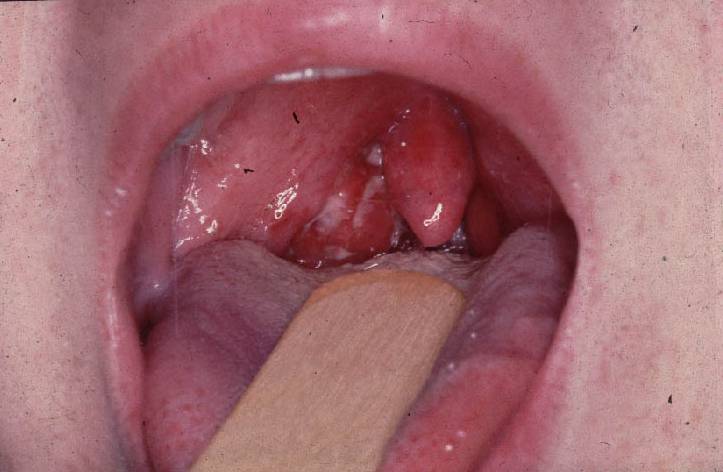
It may be necessary to increase the upper airway to reduce the resistance to airflow. An operation is often suggested as a way of permanently correcting any blockage. The following procedures are commonly required.
Septal surgery
The nasal airway is separated into right and
left by a vertical plate of cartilage and bone known as
the septum. A common reason for permanent nasal blockage
is a deviated (twisted) septum. This can be improved by
an operation called 'septoplasty'. A similar operation is
called 'submucous resection' or 'SMR'. These operations
are normally carried out under general anaesthesia. Most
patients stay in hospital overnight. An incision is made
inside the nostril and the twisted piece of cartilage is
removed or reshaped. Often the surgeon will place a
dressing inside the nostril to soak up any oozing blood
overnight. Patients are normally expected to take a week
off work. The nasal airway gradually improves as the
blood clot clears. Most patients describe the operation
as being uncomfortable rather than painful and the
satisfaction with post-operative results is usually high.
Turbinate surgery
Often septal surgery is combined with an
operation to reduce the size of the fleshy internal nasal
swellings called turbinates. Many operations have been
devised to reduce the turbinates. These range from
completely amputating the turbinate to shrinking the
turbinate by radiofrequency probes or an electrically
heated wire. Other methods include limited trimming of
the turbinate, submucous diathermy (SMD) and laser
excision.
Tonsillectomy
Some patients whose main problem is that of
narrowed pharyngeal airway due to big tonsils, may be
completely cured of snoring by simply removing the
enlarged tonsils.  This is
generally performed under general anaesthetic in the UK.
Most adult patients stay in hospital overnight and take
at least a week off work. The throat is very sore for a
few days but the pain is usually helped considerably by
oral pain killers such as codeine/paracetamol and
diclofenac. In carefully selected cases the success rate
of this procedure is excellent. Risks are low but
occasionally patients have severe bleeding post-operatively
which necessitates a return to theatre and a prolonged
stay in hospital.
This is
generally performed under general anaesthetic in the UK.
Most adult patients stay in hospital overnight and take
at least a week off work. The throat is very sore for a
few days but the pain is usually helped considerably by
oral pain killers such as codeine/paracetamol and
diclofenac. In carefully selected cases the success rate
of this procedure is excellent. Risks are low but
occasionally patients have severe bleeding post-operatively
which necessitates a return to theatre and a prolonged
stay in hospital.
Reduction of uvula
The piece of fleshy tissue that dangles down
from the centre of the palate at the back of the throat
is called the uvula. Sometimes it seems excessively long
and broad and obstructs breathing when the patient is
lying down and asleep. It is a relatively easy operation
to shorten the uvula and can be very effective in
reducing snoring in some patients. However it is often a
surprisingly painful operation and should not be
undertaken lightly. There is a risk of causing nasal
regurgitation (food and drink going up the back of the
nose during meals) if the operation is carried out too
radically although this usually settles after a few weeks.
Uvulopalatoplasty (UVP, UPPP, "U triple P"
)
Until recently this was the standard operation
performed to reduce snoring. The uvula, edge of soft
palate and tonsils are all removed together. The
operation is effective in some cases but others complain
of a very painful procedure with only modest or short
lived benefit. Most patients report a severe sore throat
for about a week and require at least 2 weeks off work or
curtailed social activities. The main risks are infection
and naal regurgitation as above.